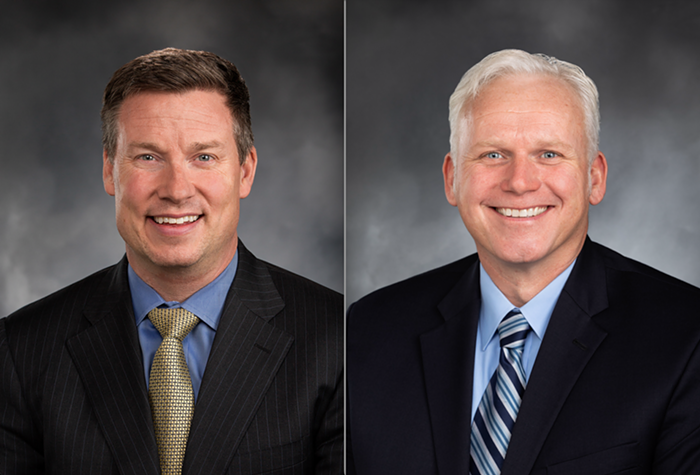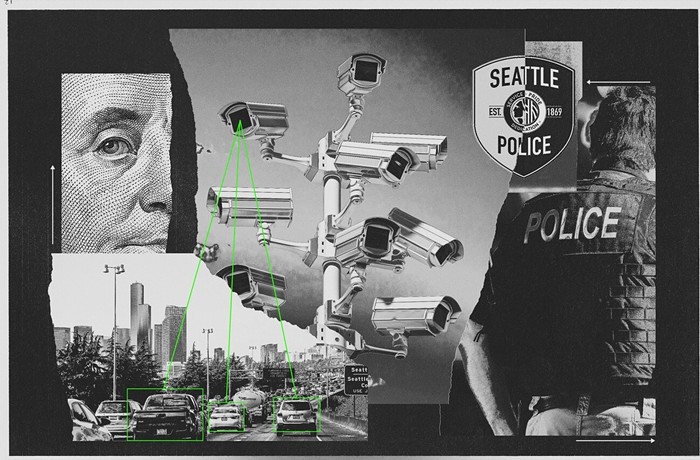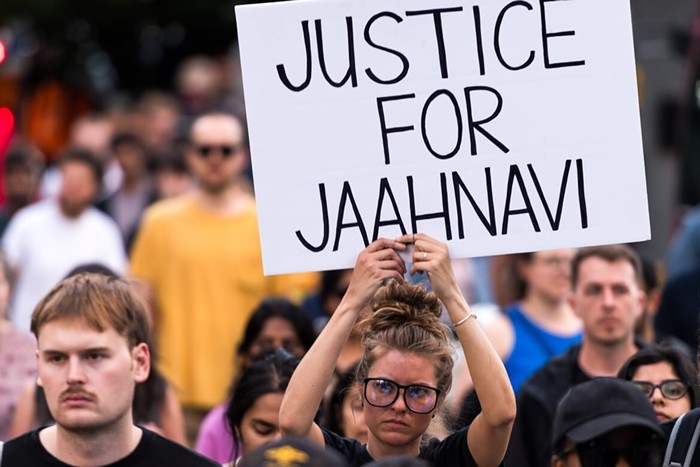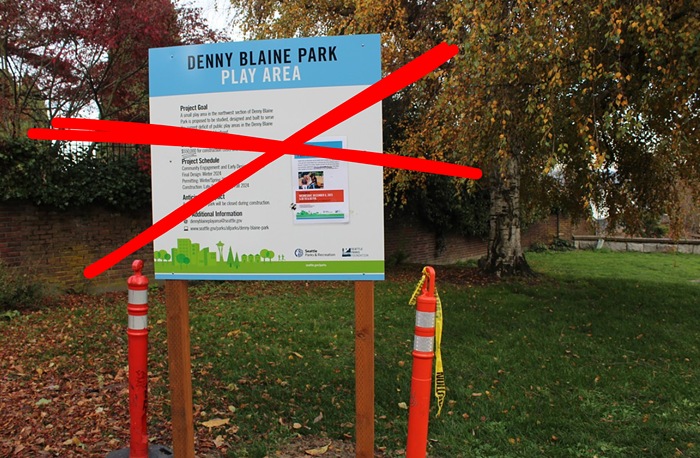
After years of delays and false starts, the effort to create city-sanctioned parking lots for people living in vehicles may get another shot next year.
Tucked in the city council’s 2022 budget passed in November is $1.5 million for “Vehicle Residency Outreach and Safe Lots.” That’s substantially more than the city has allocated for lots in the past.
People living in vehicles, vans, and RVs make up a significant percentage of Seattle’s homeless population. According to the 2020 Point-In-Time count, 2,748 people were living in vehicles in King County, representing about 23% of the unsheltered.
In the past, the city has bungled efforts to create secure lots that feature sanitation facilities and services.
In 2016, mayor Ed Murray opened a safe lot in Ballard, but operating the site proved more expensive than anticipated and it closed within a few months. Another lot in SoDo opened the same year, but it was a dusty and dirty place wedged into an industrial wasteland far from transit and services. It closed in 2018 after multiple people died there.

Mayor Jenny Durkan’s administration announced plans for a new safe parking lot in 2019, and had decided on a site near Genesee Park in South Seattle. But Durkan scrapped the plan after noisy pushback from the usual crowd of pitchfork-wielding NextDoor members and NIMBYs offended by the mere existence of homeless folks.
But now, with more than a million dollars set aside and a new regional homeless authority taking the reins from Seattle’s Human Services Department, it’s possible–just maybe–that it might work this time.
Councilmember Andrew Lewis, chair of the Committee on Homelessness Strategies & Investments, believes the city has learned its lesson and thinks the experience of building and expanding a network of tiny home villages across the city can inform the approach to safe lots. “What we need to do is think of the safe lot concept like we thought about tiny house villages,” Lewis says. “We need to agree there’s going to have to be plug-and-play, that we’ll have to try different things.”
Lewis says he's in favor of creating at least two lots with different approaches. Every person living in a vehicle has a unique story, but they generally fall into one of two categories. The first involves those in a state of transition—perhaps living in a car after being evicted or losing affordable housing. They might have a job but are in a marginal, temporary state. The other group, broadly speaking, includes those living longer-term in an RV or van who may not be interested in offers of a shelter or housing for various reasons. “There’s a significant difference in what you need,” says Marc Dones, director of the King County Regional Homeless Authority (KCRHA), “based on if you’re living with your car, with your van, or an RV.”
KCRHA staff did an intensive week of outreach to those living in vehicles earlier this fall, Dones says. Some takeaways from those conversations were that people living in vehicles, especially cars, are sometimes good candidates for emergency housing vouchers (funded by the federal American Rescue Plan), and that those living in vehicles tend to be older than the average homeless population.
But in other cases, those living in RVs are most interested in making sure their vehicle is functional and safe, and an offer of an apartment isn’t what they’re seeking.
“We need to ask: what are we trying to do here?” Lewis says. “Are people going to be living in perpetuity here, or is it going to be more like an enhanced shelter model where we’re working to encourage people to get into housing?” Both Lewis and Dones note that regardless of outcomes, residents need to be reassured that their vehicles or RVs can be safely stored without any threat of losing what may be the most valuable thing they own.
A variety of outreach strategies will be critical, Dones says. “We need to attach the right programming suite to that safe parking site. Some people may need intensive support that bridges them into housing. Other people don’t.” Dones notes that some people may be living in an RV with a crumbling roof that’s full of mold–and those people need to be transitioned to something else. But someone living in a functional RV that needs a new engine has very different needs. “What I ask my agency is the capacity to have nuance,” Dones says. “If we lose that capacity, we start doing the kind of broad-brush blanket approaches that never solve complex human problems.”

Our Redeemer Lutheran Church in Ballard has been running a small safe parking lot with room for seven vehicles on its property since 2012. In 2019, it entered into a partnership with the city of Seattle and the Urban League, which provides outreach services. The church receives no funding for the parking spaces and facilities. The amenities offered to residents are welcome but minimal: a small kitchen, a washer and dryer, a heated common area with electrical outlets for charging phones, and a bathroom with a shower. RVs aren’t allowed (due to city regulations) and residents are invited to sleep in the common room when temperatures drop below 40 degrees.
When I visited the church this week, there were four people in three vehicles making use of the lot. Elizabeth Dickinson, social justice coordinator for the church, took me on a short tour and said that the lot mostly provides a sense of stability. “At least when you know where you’re going to sleep, it’s one less thing to worry about,” she says.
In the common room, two residents who preferred not to be named microwaved a simple lunch and talked about their experience. One man is in his sixties and retired, and the other man is his son, who is unemployed and unable to afford housing. They sleep in a Chrysler PT Cruiser and have enough blankets to keep warm most nights, though it’s uncomfortable sleeping on seats turned down, they say. Both have been at Our Redeemer since April and would like to find housing but haven’t had any luck. They’re on a waiting list for subsidized housing at Nelson Manor (run by Seattle Housing Authority) but have been told the earliest they could qualify is January 2023.
Though it’s referred to colloquially as a safe lot, there’s nothing in the way of security or fencing. Sometimes an occasional drug deal or someone loudly driving doughnuts in the parking lot keeps them up at night. But all in all, they appreciate the lot and say the church's staff and parishioners have been "absolutely wonderful." However, they’ve been frustrated with the lack of subsidized housing options and feel the efforts from counselors at the Urban League haven’t been enough to help them navigate their options.
“I’m retired and on a limited income,” the older man said. “And in a city with rent at $2,400, how can I afford it?


















